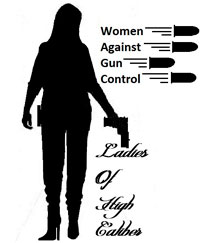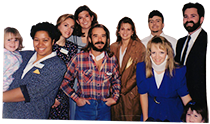More LIES from HCI : Children, Minors and Adolescents How VPC Blurs Those
Children, Minors and Adolescents How VPC Blurs Those
Distinctions in Its Latest ?Study?
by Sean Oberle
[email protected]
November 30, 2001
The newest ?study? about handguns from Violence Policy
Center (VPC) provides a prime example of what I object to
with many gun control ideas: identifying problems, but
either jumping to unrealistic solutions or not identifying
solutions at all.
VPC?s ?study,? Kids in the Line of Fire, is a combination of
both. It identifies no explicit solution, but its implicit
solution ? a ban ? is unworkably unrealistic (leaving aside
important questions of rights).
On the other hand, VPC almost came out with honest data for
its ?study? … almost. The November 28 ?study? authored by
Karen Brock at least:
1) Defines openly what the organization means by child, as
opposed to other factoid-producing ?studies? that lump in
18- and 19-year-olds (and occasionally older) with children
but do not reveal this fact.
2) Uses a definition that, while problematic, is not
immediately objectionable.
VPC?s defines child as anyone 17 or younger ? in other
words, minors. My initial reaction was to think, ?That?s
not so bad,? but I soon realized that this reaction perhaps
was due to being so used to the 19-year-old ?children? lie,
that VPC?s use of the border between minors and age of
majority seemed good in comparison[*].
Nonetheless Misleading
However, VPC’s definition nonetheless is misleading,
especially given the ?findings? of VPC that two ?children?
per day are murdered with handguns and that nearly one-third
of ?children? murdered with handguns were the victims of
other ?children.? What VPC has done is lump in half of one
group (adolescents) with another group (children). There
are two problems with this tactic:
1) First, while taking cover behind the legal definition of
minor, it still is nothing more than the old trick of using
statistics that reflect a problem of the late teens (and
early twenties) but using a term ? children ? that creates
an image of prepubescent grade schoolers and even of
toddlers.
2) Second, in exchange for the appeal to emotion derived
from the term children, the tactic deflects attention away
from the real problem ? that of adolescent violence. That?s
good from a propaganda perspective, but horrid from a useful
and valid violence policy perspective.
Psychologically, adolescents are neither children nor
adults. Thus, legally, they can be either minors or adults
? they represent a transition, one that straddles the
arbitrary 18-year-old legal border for adult rights and
responsibilities. Our laws reflect the fuzzy nature of
adolescence, providing for gradual transition into adult
rights. Adolescents get to drive and hold jobs without
parental permission before 18 (mostly at 16). They get to
vote and make legal decisions about themselves at 18. They
get to buy alcohol and handguns at 21.
The bottom line is that murder spikes during adolescence in
terms of both victims and perpetrators ? rising sharply in
the mid-teens and dropping off in the mid-twenties.
Furthermore, males overwhelmingly cause this spike. Thus,
by mixing some adolescents in with children, VPC uses
figures that more closely represent male adolescents than
children. However, saying, ?two adolescent males per day?
just doesn?t have the same propaganda effect as saying, ?two
children per day,? does it?
Understanding VPC?s Mission
As I stated above, VPC offers no solutions. It simply uses
this ?study? to attack guns and gun manufacturers. For
example, Brock notes in the press release about the ?study?:
?Children can’t legally buy handguns, children can’t legally
possess handguns ? yet they are killing each other with
handguns. The reason: children still have easy access to
handguns because of the lax practices of an unregulated gun
industry and the mistaken idea that a handgun in the home
offers protection, when in reality it is far more likely to
result in horrific consequences.?
Leaving aside the factual errors (the gun industry most
certainly is regulated when it comes to access by minors,
and VPC?s risk/benefit position is based on incomplete
Kellerman-like factoids), demonizing objects and people are
not solutions.
But given VPC?s mission, this ploy makes sense. Boiled down
to its essentials, that mission is to demonize guns. VPC?s
goal is to convince the public that guns ? handguns in
particular ? are irredeemably dangerous products (See:
About VPC). VPC openly advocates a total handgun ban (See:
VPC’s 1999 Handgun Ban Backgrounder). Indeed, VPC?s pro-ban
position goes so far that it rejects the supposed
middleground idea of licensing and registration (See my
essay: Violence Policy Gambit).
Thus, the solution in this latest ?study? is implied, and
understood, by those who know VPC?s mission ? ban handguns.
Why doesn?t VPC just say this? I don’t know. Perhaps the
group accepts the idea of a ban as so axiomatic that it does
not believe it is necessary to state it. Perhaps it knows
that the general public, while often more receptive to
background checks and registration, typically opposes
outright bans from the perspectives of both rights and
utility.
I find the latter to be more likely. In order to reach its
goal of banning handguns, VPC must overcome public rejection
of that idea ? the path to that ban is to demonize guns and
their makers.
Sean Oberle is a Featured Writer and gun control analyst for
KeepAndBearArms.com. Reach him at
[email protected] View other articles from him
at http://www.KeepAndBearArms.com/Oberle.
****
[*] However, VPC does revert into the ?children over 18?
distortion at least once in the study. It states in the
introduction to the ?study?:
?Although children and teenagers cannot buy guns legally,
they can possess them. This is a reflection of the
patchwork nature of laws regulating firearms possession by
juveniles. Federal law prohibits anyone under 21 years old
from purchasing a handgun from the holder of a Federal
Firearms License (FFL) and prohibits handgun possession by
anyone under the age of 18 years old?although the law
contains numerous exemptions. The Violent Crime Control Law
Enforcement Act of 1994 made it illegal for any person, with
some exceptions, to sell or transfer a handgun or handgun
ammunition to anyone under 18 years of age.?
Note two contradictory points in this quotation using VPC?s
?17 and younger? definition:
1) ?children? can possess handguns, but
2) possession is banned by anyone under 18.



